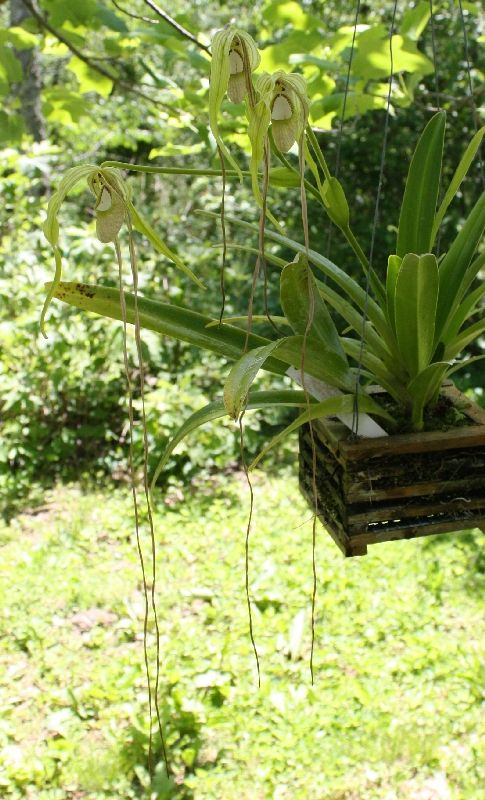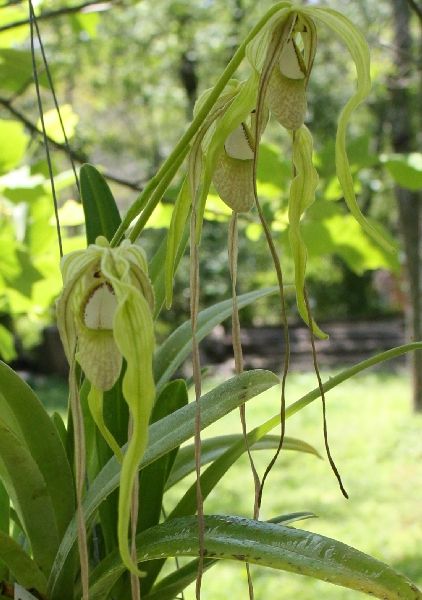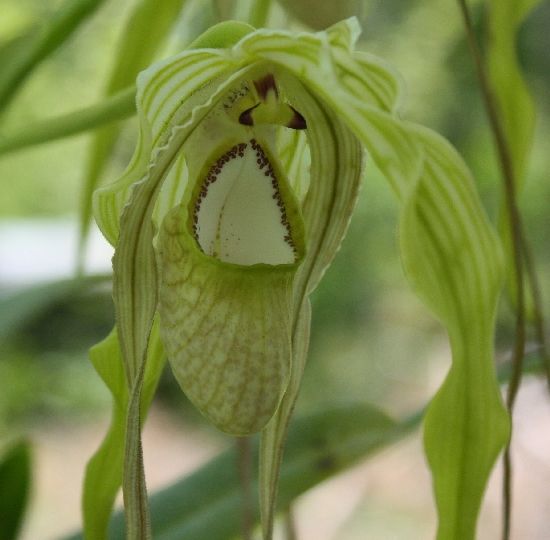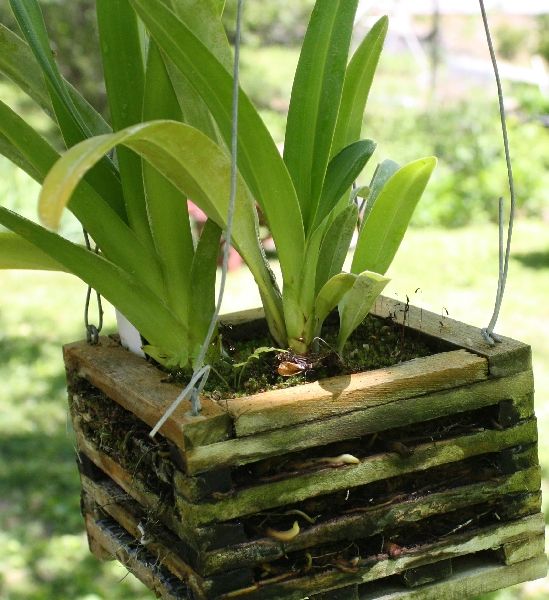You are using an out of date browser. It may not display this or other websites correctly.
You should upgrade or use an alternative browser.
You should upgrade or use an alternative browser.
Phrag warscewiczianum
- Thread starter Rick
- Start date

Help Support Slippertalk Orchid Forum:
This site may earn a commission from merchant affiliate
links, including eBay, Amazon, and others.
Daniel Herrera
Well-Known Member
That is a well grown plant!
What conditions do you give it?
What conditions do you give it?
Nicely done, Rick! BTW - Not to hi-jack the thread, but has anyone seen Guido's article on Phrag. popowii in the latest Orchid Digest? Really well written and a good argument for keeping it popowii rather than humboldtii..........
ehanes7612
Well-Known Member
nice
Carper
Well-Known Member
I do like these and have had many awards with my blooms until recently. Due to erwinia I had to totally remove the infected growth plus spike with 3 flowers. This left 4 growths with another spike which I decided to also remove to help the plant settle in after repotting. Would have been a good show until then so I'll just admire yours!!
Gary
UK
Gary
UK

$49.99 ($25.00 / Count)
2 Lady Slipper Orchids, Yellow Orchids Plants Live Lady Slipper, 2 Medium Root Bulbs Ornament Orchids Plant Root, No Leaf
KIM MARIE SMITH

$11.99 ($0.12 / Count)
CHUXAY GARDEN Cypripedioideae-Lady's Slipper Orchids,Lady Slipper Orchids 100 Seeds Tropical Exotic Orchids Rare Small Orchid
color green

$29.99 ($15.00 / Count)
2 Pink Lady Slipper Orchid Plant Live Bud Roots, Live Orchid Plants Bud for Planting, Rare Orchids Plant
RACHEAL LEE BARRETT

$29.99 ($6.00 / Count)
5 Small Lady Slipper Orchids, Pink Orchids Plants Live Lady Slipper, Ornament Orchids Plant Root, No Leaf
KIM MARIE SMITH
phrag guy
Well-Known Member
great one
What a spacious GH you have! 
Migrant13
Mature growth?
It definitely looks happy in that basket. You grow such great plants.
Rick
Well-Known Member
Nicely done, Rick! BTW - Not to hi-jack the thread, but has anyone seen Guido's article on Phrag. popowii in the latest Orchid Digest? Really well written and a good argument for keeping it popowii rather than humboldtii..........
Yes I did. According to his article, popowii (the dark caudatum species with the staminode present) is a substitute for warscewiczianum, and humboldtii and wallisii are dead names.
I'm trying to support the name changes by using warsce for what ended up as wallisii.
Rick
Well-Known Member
That is a well grown plant!
What conditions do you give it?
Thanks Daniel.
This is a Windy Hill plant I got in 2006 (Tower Grove X Windy Hill).
So over the last 7-8 years its seen quite a few changes. If it wasn't for erwinia it would be 4X larger. I've always tried to keep things bright, breezy, and a bit to the cooler side for my long petaled phrags, but changed things up about 3 years ago which made a lot of difference.
Low K feeding and basket culture made this plant much easier to cope with. Reducing overall feed rate to about 5-10ppm N with some "bloom boost" like supplementing (with each daily watering). These guys like lots of water.
Haven't had erwinia with this plant for about 2 years now (knock on wood).
I periodically mash up a couple of 350mg asprins in 100ml water and distribute to my phrags. But if you can get the K down then the leaves toughen up with better Ca induction and increase plant protection against disease.
SlipperFan
Addicted
Wonderful flowers and plant, Rick!
I still have erwinia battles, but not as bad as before K-lite. I'm interested in your aspirin regimen -- to you spray the plants with it, or water them? And how often is "periodically"? Thanks...
I still have erwinia battles, but not as bad as before K-lite. I'm interested in your aspirin regimen -- to you spray the plants with it, or water them? And how often is "periodically"? Thanks...
Rick
Well-Known Member
Wonderful flowers and plant, Rick!
I still have erwinia battles, but not as bad as before K-lite. I'm interested in your aspirin regimen -- to you spray the plants with it, or water them? And how often is "periodically"? Thanks...
Dot
I don't think I've got the asprin thing down to a protocol yet.
Most of the time I just reacted to either a discoloration or actual breakout of the problem. Sometimes just got nervous and remembered to do it.
But probably every other month would be a good bet. The stuff doesn't dissolve well at all, so spaying is not a viable option.
I generally pour it around the base of the plant, and sometimes pour it to get into the lower leaf axials.
I played with real weak doses (a tablet or 2 per gallon). That may be enough to get the plant to start making its own. But then I read a paper that showed actually kill of erwinia in petri dish at the equivalent of about 50 tablets per gal!! So presently I'm up to 2 tablets per 100 ml and pouring it around the base of ~ 5 plants. Sometimes I'll do this for a couple of days and then forget about it for a couple months.
SlipperFan
Addicted
Thanks, Rick. I'm going to experiment.
bullsie
Well-Known Member
Oh this is lovely! If I were to purchase this species, may I ask what name I would use to get what is pictured?
M
MaryPientka
Guest
Oh this is lovely! If I were to purchase this species, may I ask what name I would use to get what is pictured?
I second this question
eteson
Phragmad
Great plant and nicely grown!
wallisii here in Colombia... but more and more people is starting to call it warscewiczianum.
I do have some flasks to sell of this species and the peloric form without puch (lindenii)... if someone is coming in August to the international orchid show in Medellin...
I second this question
wallisii here in Colombia... but more and more people is starting to call it warscewiczianum.
I do have some flasks to sell of this species and the peloric form without puch (lindenii)... if someone is coming in August to the international orchid show in Medellin...











